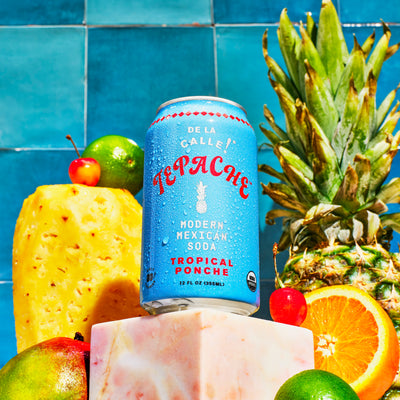Everything You Should Know About Lactic Acid

Lactic acid is often a buzzword associated with the muscle soreness that comes from intense exercise, but what really is lactic acid? Where does it come from? And is it as bad as everyone says it is? In this article, we’ll explore the answers to these questions and more to provide you with everything you should know about lactic acid.
Overview
At the most basic level, lactic acid is an organic, naturally occuring chemical produced during a specific type of anaerobic energy production called lactic acid fermentation. Anaerobic respiration refers to the process that our cells undergo to produce energy when there is no readily available oxygen supply.
However, we’re not the only creatures that produce lactic acid. Bacteria in fermented foods also produce lactic acid. In some instances, lactic acid is also man-made and acts either as a preservative or flavoring in certain packaged foods.
Another name for lactic acid is lactate. Although lactate sounds very similar to lactose, the sugar found in dairy products and “lac” is the Latin prefix for milk, this acid does not contain milk. The only reason that lactic acid has its name is because the scientist who first isolated the acid, Carl Wilhelm, used spoiled milk to do so.
While it might seem counterintuitive, foods such as fruits and vegetables that contain lactic acid are vegan because when used as a preservative or flavoring agent, lactic acid usually comes from plant-based products.
Where does lactic acid come from?
Lactic acid is the byproduct of lactic acid fermentation, a process that occurs when there is no oxygen available for cellular respiration.
Essentially, the goal of both aerobic (oxygen-using) and anaerobic (without-oxygen) respiration is to break down glucose or other carbohydrates. When there is no oxygen available, cells and bacteria engage in multiple types of anaerobic energy production.
One type of anaerobic energy production is called lactic acid fermentation. This type of fermentation turns glucose into lactate through a two step process involving glycolysis and NAD+ regeneration. During glycolysis, glucose is transformed into pyruvate through chemical reactions involving ADP and NAD+. From there, the pyruvate is transformed into lactate through a chemical reaction that converts NADH back into NAD+.
Are there other types of fermentation?
Yes! The other main type of fermentation is alcohol fermentation which, you’re probably acquainted with if you’ve ever had an alcoholic beverage. The main difference between lactic acid fermentation and alcoholic fermentation is the final product.
While the final product of lactic acid fermentation is lactate, the final product of alcohol fermentation is ethanol, the type of alcohol found in beer and wine.
Lactic Acid in Foods
Lactic acid is often naturally found in and added to mainy of the foods that are part of our regular diet. In this section, we’ll take a look at some foods that naturally contain lactic acid and others that make use of lactic acid as a preservative or flavor additive.
Foods That Naturally Contain Lactic Acid
The foods that naturally contain lactic acid are those that are fermented such as sauerkraut, kimchi, soy sauce, sourdough bread, and tepache. Tepache is a traditional Mexican beverage made from fermented pineapple that can come in a wide variety of flavors.
Lactic acid can also be found in dairy products such as yogurt and kefir as well as fermented meats like salami. Most of these foods have a tangy, almost sour flavor which is a result of the fermentation process.
Are fermented foods healthy?
Fermented foods are extremely healthy and provide a wide array of health benefits.
Perhaps the most commonly cited health benefit of fermented foods is attributed to the probiotics produced during fermentation. Probiotics are known to improve digestion by reducing bloating, gas, and the effects of uncomfortable digestive issues such as diarrhea and constipation.
Fermented foods also support your immune system, partially because several fermented foods are also high in immune-aiding nutrients such as vitamin C and iron. It’s also thought that consuming probiotics when sick can speed up your recovery time.
Foods with Added Lactic Acid
Oftentimes lactic acid is added to foods to process and preserve them such as vegetables and different cereal grains. Adding lactic acid to processed foods makes them resistant to spoilage and can sometimes improve the nutritional value of the food.
Lactic acid is also added to many types of cheese, such as Gouda, and is a key ingredient in its creation due to its ability to control the acidity levels of the final product. In fact, lactic acid has been part of the food-making process for thousands of years.
Lactic Acid in Your Body
There are two main places in your body where lactic acid is produced during lactic acid fermentation: red blood cells and muscle cells.
Red Blood Cells
Your red blood cells do not have mitochondria, an organelle found in most cells that is sometimes referred to as the “powerhouse” of the cell because it is usually where the majority of the chemical energy is produced. However, given that red blood cells need a relatively small amount of energy to do their job of transporting oxygen between lungs and tissues and transporting waste products to be expelled from the body, they expel their mitochondria during the maturation process.
Expelling the mitochondria means that all of the energy produced by red blood cells is done so anaerobically, of which lactic acid is a byproduct.
Muscle Cells
For the most part, muscle cells engage in aerobic respiration to produce energy. However, in times where the body is under great stress, such as during intense physical exercise, your muscle cells switch to lactic acid fermentation because it is a much quicker way to produce energy.
For a long time it was thought that the soreness and muscle aching that accompanies working out is caused by excessive lactic acid buildup. However, recent studies show that this is most likely not true because when lactic acid accumulates in the muscle cells it is transported back to the liver and heart through the bloodstream. Once back in the liver and heart, lactic acid is converted back to sugar and pyruvate and processed accordingly in cellular respiration.
Lactic Acid Bacteria
Lactic acid is also created in the gut by some bacteria that utilize anaerobic energy production. It’s thought that anywhere from 0.01-1.8% of the gut bacteria produce lactic acid when respiring.
There are also bacteria that produce lactic acid in our mouths. Unlike the gut bacteria, this type of bacteria has a negative effect on our oral health because they erode tooth enamel.
Summary
Lactic acid has a bad reputation because for a long time it was associated with muscle soreness during exercise. However, this myth surrounding lactic acid has been disproven and, in fact, lactic acid is far from a nuisance. Lactic acid is the byproduct of lactic acid fermentation, a process that converts glucose into lactate.
This acid is made in the body by various cells and bacteria and is used as a preserving agent in many foods such as frozen fruits and vegetables. Lactic acid naturally occurs in fermented foods such as sauerkraut and Tepache, and is responsible for the delicious, tangy taste of fermented foods. Not only are fermented foods delicious, they are packed with probiotics that can improve your digestive system and boost your immune system.
Sources:
https://biologydictionary.net/aerobic-respiration/












